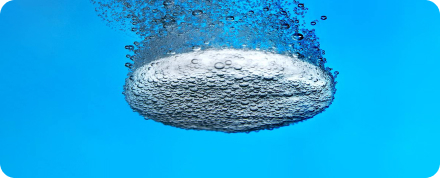


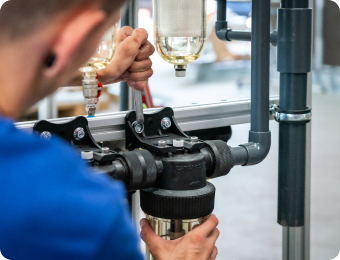
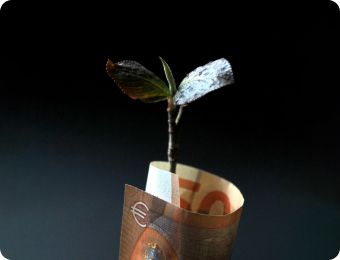
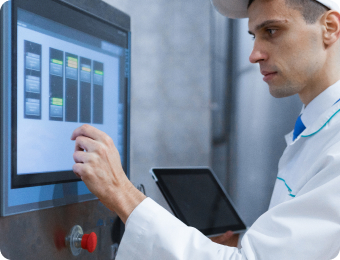

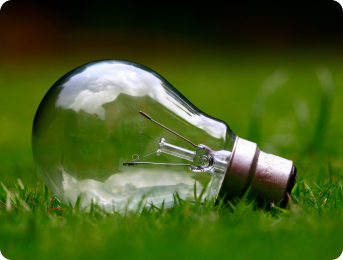
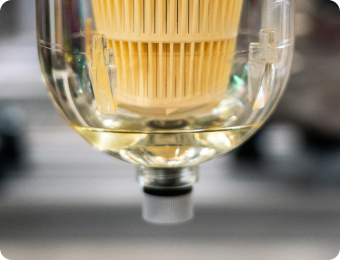
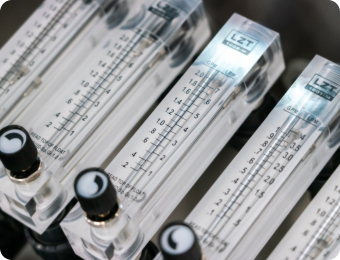
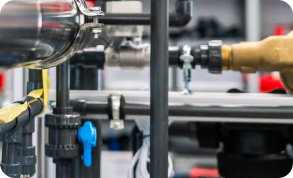

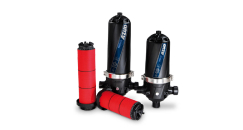
The water flows through the inlet (1) and enters the filter element. It then passes through the filter (2), with particles being retained inside the filter element. The filtered water exits through the outlet (3). When the pressure difference between the filter's inlet and outlet reaches the preset level, the flushing cycle is triggered (∆P).
A hydraulic valve opens at the drain outlet, initiating suction in the internal nozzles (4). This, along with the filter's upward and downward spiral movement, draws the captured particles into the waste stream, which is then expelled through the drain outlet (5). The duration of the flushing cycle is predetermined by the control unit. Once the cycle is completed, the flushing valve closes, and the flushing process ends. The flushing process uses minimal water.

